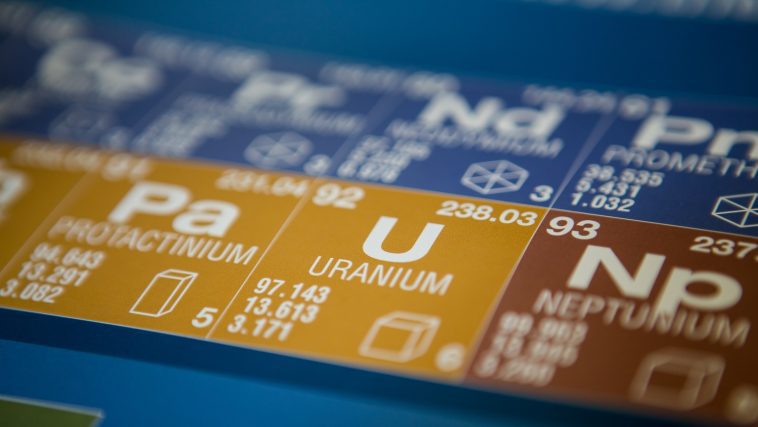Decay Rate
One of the many dogmatic beliefs taught by the evolutionists is “the decay rates of radioisotopes is constant.” This is plainly an assumption, but it has been elevated to nearly the status of a “law of science” by the supporters of the evolution model. It is just not true.
Many things have been shown to speed up the decay rates of radioactive, unstable elements. The most extreme is high-energy heating, such as in the plasma state. At this temperature, unstable atoms will decay at even trillions of times their usual rate. Evolutionists believe that the whole universe was once in the plasma state.
Our sun is currently in the plasma state – so is every bolt of lightning in our atmosphere.
Other effects have been noted in other changing conditions such as underground temperature, pressure, and magnetic field. In 2010, it was discovered that every 33 days in the solar cycle, cesium atoms here on earth decay faster — the effect is even greater during times solar flare activity. The evolutionists’ mantra of “constant decay rates” has now been proven — by science — to be nothing but an urban myth. It is not true. It cannot be offered in evidence for an earth older than 6000 years.
Original Amount of Radioisotope
In radiometric dating techniques, it is necessary to know how much of the unstable element was in the rock sample to begin with. If testing reveals very little of the isotope present, this does not necessarily mean that the rock is very old. It could mean that there was not much of the isotope in the rock at the start.
So, how can we be sure? We can’t. Many assumption methods have been devised by the evolutionists, to try to get an estimate on how much was there at the start. But all of these methods are based upon a guess of one sort or another.
What is being done here is a simple subtraction problem — “A minus B equals C.” Simple as it is, it still just cannot be done, unless you know for sure what “A” is.
Original Amount of Decay Product
The problem here is similar to the problem of the original amount of the unstable “parent” isotope. Radiometric tests are often run on the basis of how much of the decay product is found in the sample. Unstable radioactive elements all eventually change into stable non-radioactive things, like stable lead metal or stable argon gas, etc.
If there is a high content of a known decay product in a rock sample, then evolutionary researchers are likely to assume that much of the stable element or that the entire amount of it actually did come from the unstable atom decaying, and not from just being there in the rock to begin with. It is clear that many rocks do already contain elements that are decay products, without having to get them from the decay of unstable elements within the rock.
Closed System Assumption
One of the most unlikely assumptions upon which all radiometric dating methods depend is the “closed-system” assumption.
What this belief requires, is that the rock sample has remained undisturbed by anything that could have affected its decay rate, parent isotope amount, or daughter isotope amount — for billions of years. This is unlikely. As a matter of fact, it would be a sure bet that something did disturb the sample, if it sat there in the rock layers, waiting three billion years to be dug up by a modern-day researcher.
- Earthquakes nearby,
- magma chambers getting too close,
- groundwater leaking into the layer or out of the layer,
- chemical changes,
- dissolving of isotopes,
- or crystallization of incoming isotopes
are all examples of things that could easily happen to a rock sample underground, in only a matter of centuries, not necessarily millennia nor eons of time.
Scientific measurements are not allowed to be based upon the hopes of being extremely lucky. Radiometric dates are therefore based upon extreme wishful thinking — something very far from the objectivity of true science.
Helium Diffusion
Most radioactive elements are alpha emitters. This means that they release alpha particles in the form of alpha radiation as they go through the decay sequence and become the product element (like uranium turning into lead, for example). An alpha particle is made of two neutrons and two protons stuck together. This is the same thing as the nucleus of an atom of helium gas. Many radioactive elements release helium into the rocks where they are found.
Helium can soak through solid rock, but not very quickly.
If the earth were 4.6 billion years old, however, there would have been plenty of time for most of the helium from such a long history of radioactive decay to escape from the granite rock formations where alpha-emitting uranium is found. If the earth is 6000 years old, there would not have been enough time for all that helium to get out. How much helium is still in the rocks? A lot — enough to set the age of the earth to be as low as only 5680 years. This is much closer to the biblical time frame of 6000 years than to evolutionists’ 4.6 billion.






